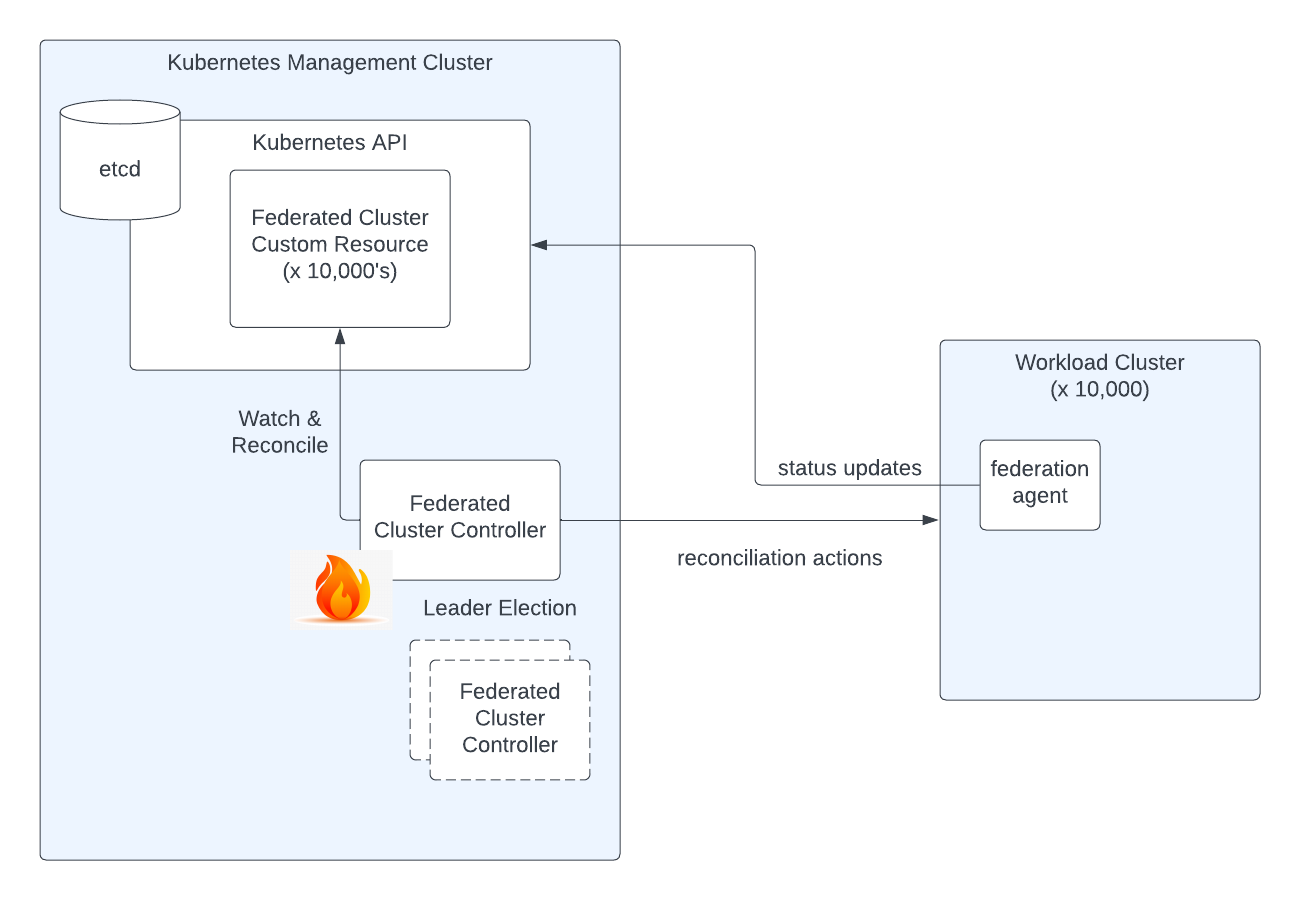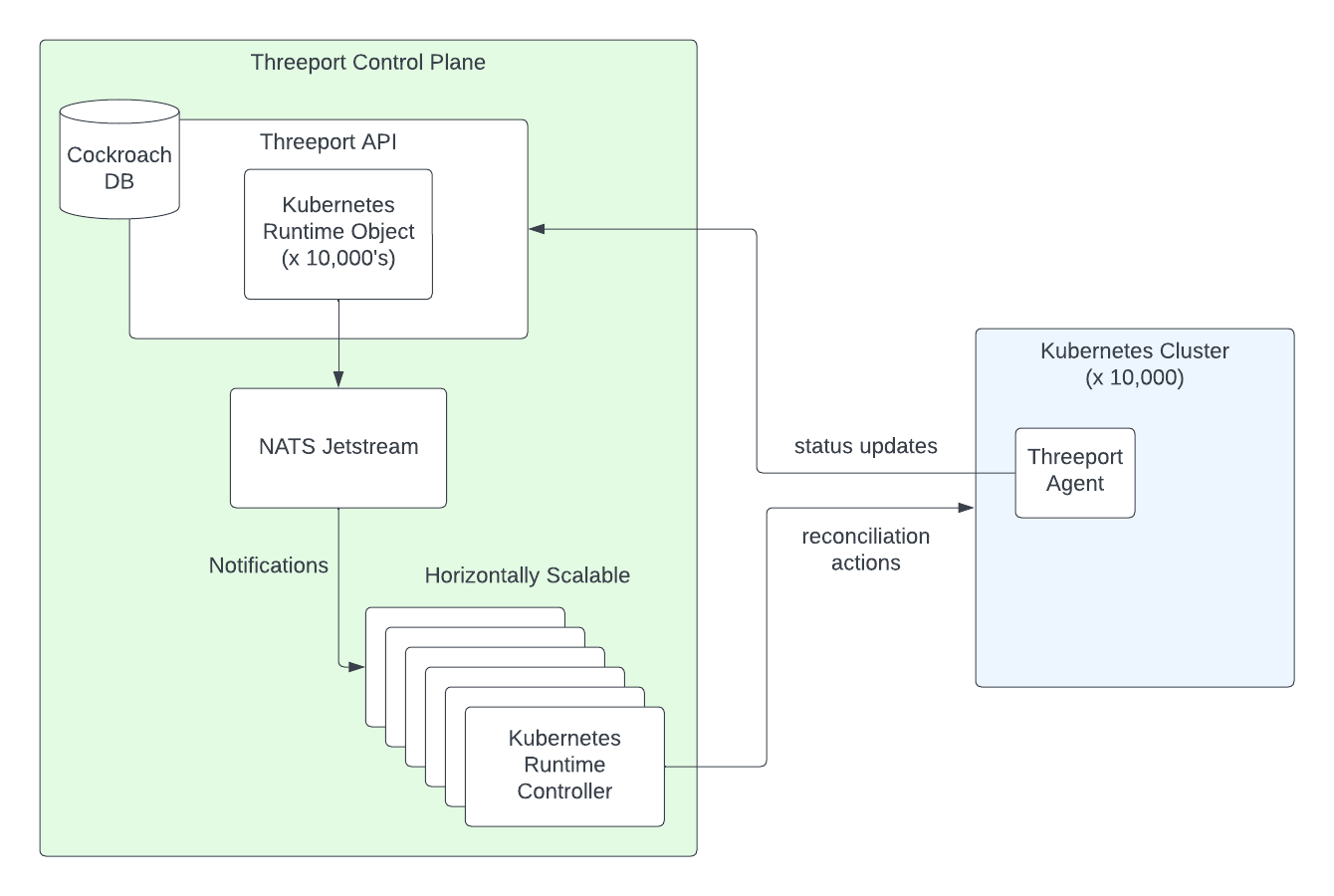Kubernetes Federation¶
This document describes the Threeport approach to managing a fleet of Kubernetes clusters.
There have been many attempts at federating Kubernetes using Kubernetes itself, i.e. Kubernetes operators that install and keep an inventory of clusters as well as manage multi-cluster app deployments. Kubernetes was designed to be a data center-level abstraction and it performs this function very well. It was not designed to be a global software fleet abstraction and it has inherent scaling and availability constraints that prevent it from providing the ideal solution to this concern.
A global federation layer must be highly scalable and have geo-redundant availability. A control plane for all your software deployments must have the appropriate capacity and resilience for the task.
Kubernetes Controllers¶
Kubernetes controllers are not horizontally scalable. When deployed in a highly available configuration, only one controller is active at any given time and they use leader election to determine which of a set of identical controllers manage operations at any given time. In many use-cases, many thousands of clusters must be managed coherently, not to mention the software in those clusters. This is a tremendous amount of state reconciliation to be performed by a single controller that does not share load across multiple instances.
Kubernetes Data Store¶
Kubernetes uses etcd which is an excellent distributed key-value store. It has served Kubernetes very well in its purpose. However, etcd works best in a single region. Tuning for the increased latency of cross-region etcd clusters is possible, but treacherous. Furthermore, it is not a relational database which means if you need transactional capabilities that allow a database to make changes to multiple objects with ACID guarantees, etcd is not the best choice.

Threeport Controllers¶
Threeport controllers inherit a lot of design principles from Kubernetes. They are level-triggered state reconciliation programs that operate on a non-terminating loop until the desired state is realized in the system. One thing that Threeport controllers add is horizontal scalability. Any number of Threeport Controllers can operate simultaneously to manage the same set of object types. They use NATS Jetstream to broker notifications to help achieve this. In Threeport, the message broker helps ensure a notification of a particular change is delivered to just one of a set of identical Threeport controllers. Threeport controllers also use the message broker to place distributed locks on specific objects while they are being reconciled so that race conditions don't occur between different replicas of a controller when rapid changes are made to a particular object.
Threeport Data Store¶
Threeport uses CockroachDB, a purpose-built geo-redundant relational database. The geo-redundancy is essential for a purpose as critical as a global control plane. And the transactional capabilities allow changes to multiple related objects to happen safely. When you are dealing with remote clusters and the workloads therein, changes that affect multiple objects are common. Being able to apply a change to all the affected objects or none at all if a problem occurs, is an important guarantee to have for stability.
